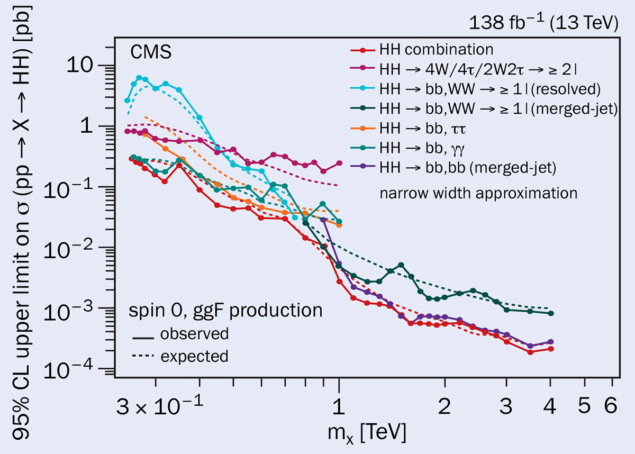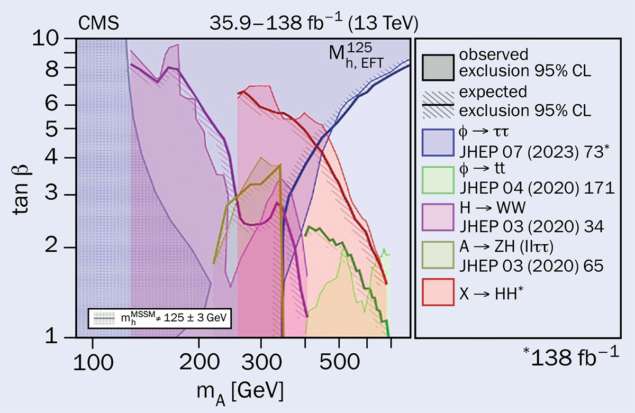A report from the CMS experiment.

Besides being a cornerstone of the Standard Model (SM), the Higgs boson (H) opens a very powerful path to search for physics beyond the SM. In particular, in the SM there are no particles that are sufficiently heavy to decay into two Higgs bosons. Therefore, if we observe the resonant production of HH pairs, for example, we have clear evidence for the existence of new physics, as predicted by models with an extended Higgs sector.
The CMS collaboration recently conducted a search for the resonant production of Higgs-boson pairs. The analysis combines six different analyses and five HH final states, targeting H decays into b quarks, photons, τ leptons and W bosons. As figure 1 shows for a spin-0 resonance (denoted X), the combination of the decay modes covers a wide mass range, from 280 GeV to 4 TeV. While no resonant signal is observed, stringent upper limits on the pp → X → HH cross section are obtained, which reach values of about 0.2 fb at the highest masses. These are the strongest observed limits to date for a scalar mass below 320 GeV or above 800 GeV.

One possible candidate for such a resonance is a heavy scalar from an extended Higgs sector, as predicted in the Minimal Supersymmetric Standard Model (MSSM), which features three neutral and two charged Higgs bosons. Figure 2 shows the excluded region of the model parameter tanβ (the ratio of vacuum expectation values of the two underlying Higgs doublets) as a function of the mass of the CP-odd Higgs boson, mA. The HH combination is sensitive up to well beyond tanβ = 6, just above the HH threshold, and its exclusion extends up to beyond 600 GeV, outperforming the lower limits from the (also shown) searches of single heavy Higgs-boson production in this mass range. Compared to other direct searches, there is unique sensitivity for mA > 450 GeV and tanβ < 5.
This result is part of a recent comprehensive review article on resonant Higgs-boson production searches by the CMS collaboration, covering the VH, HH and YH final states, with V denoting a W or Z boson and Y representing an additional new boson.
Further reading
CMS Collab. 2024 (to be submitted).
E A Bagnaschi et al. 2021 LHCHWG-2021-001.







